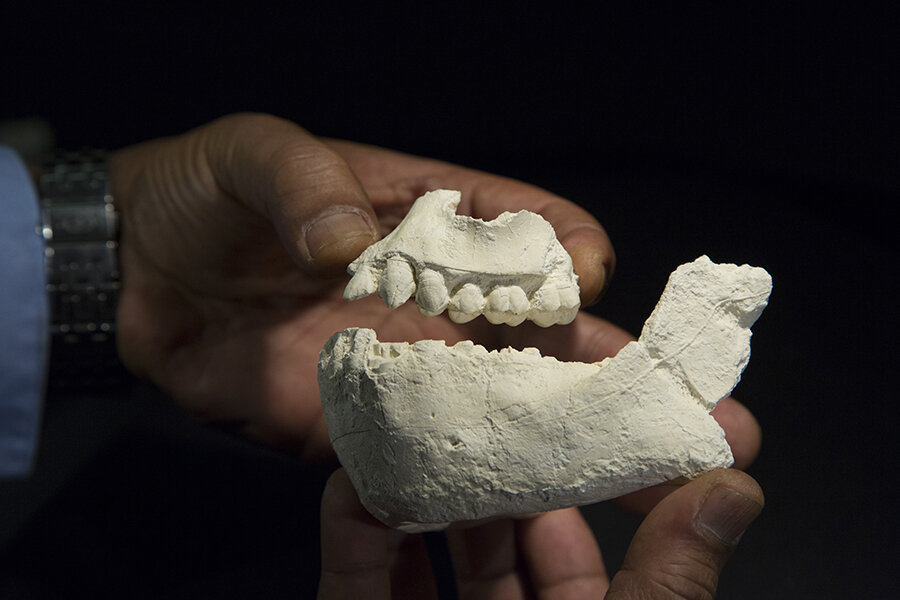New hominid species may have been neighbor to famed 'Lucy'
Loading...
New fossils from Ethiopia are providing fresh evidence that some 3 million to 4 million years ago, ancestors to modern humans may have been more diverse than previously thought.
That diversity would have led to an inadvertent test to see which species was best able to weather changes in climate and habitat during that period, some researchers suggest. So far, that would appear to be Australopithecus afarensis, represented by its most famous example, Lucy, discovered in 1974 by Donald Johanson and Tom Gray.
But Lucy and her species were not the only Australopithecines on the block. Over the years, researchers have reported uncovering two additional species from this period. If this latest discovery holds up, it would bring to four the number of known Australopithecus species living within this million-year span. These species range from Ethiopia to Chad.
The research team that found the new fossils – upper and lower jaws that included teeth – have classified the find as belonging to a new species of hominin, a subset of hominids that includes modern humans and our direct ancestors. The researchers suggest that the new species, which they have dubbed Australopithecus deyiremeda, was a close relative to A. afarensis.
The team's analysis appears in Thursday's issue of the journal Nature.
A. deyiremeda's remains were found at a site in Ethiopia's Afar region known as Woranso-Mille, about 22 miles north of another site rich in A. afarensis fossils – pointing to the possibility that the two species roamed the same general region at about the same time.
With several Australopithecus species living in eastern and central Africa in the same general period, "we're looking at hominins who are potential candidates as human ancestors," says Henry Bunn, a paleoanthropologist at the University of Wisconsin at Madison.
During this period, known as the middle Pliocene, the climate was getting cooler and drier. Vegetation and food resources were changing.
Looking at these Australopithecines, "you could almost think of them as ecological experiments as populations try to exploit new habitats and new resources successfully," says Dr. Bunn, who was not a member of the research team. "Most of those species went extinct."
In the past, researchers had broken the last 5 million years of hominin evolution into blocks of 1 million to 2 million years, he explains. Based on the fossil evidence available at the time, "you only had one species per block of time," he says. At about 2 million years ago, with the emergence of the genus Homo, hominins became more diverse.
With Lucy and subsequent discoveries, it now appears that the middle Pliocene also hosted a diverse array of hominins that included at least one additional group beyond Australopithecines – a group represented by Kenyanthropus platyops.
The newly discovered jawbones and teeth – dated to between 3.5 and 3.3 million years ago – shared some characteristics with A. afarensis and others with K. platyops.
This period also coincides with the appearance of the earliest stone tools yet found, a discovery announced last week in another paper in Nature.
“The new species is yet another confirmation that Lucy’s species, Australopithecus afarensis, was not the only potential human ancestor species," according to Yohannes Haile-Selassie, curator of physical anthropology at The Cleveland Museum of Natural History who headed the team making the discovery.
“Current fossil evidence from the Woranso-Mille study area clearly shows that there were at least two, if not three, early human species living at the same time and in close geographic proximity,” he said in a prepared statement.
[Editor's note: The original version of this article misidentified the researchers responsible for the discovery of Lucy. It was Donald Johanson and Tom Gray.]






